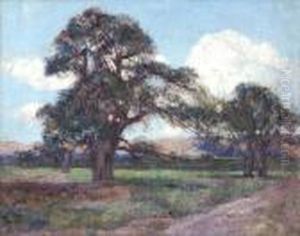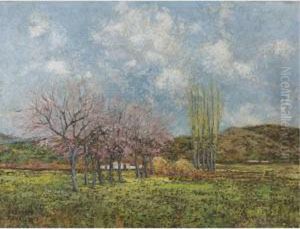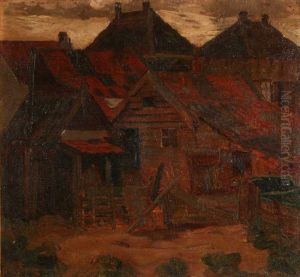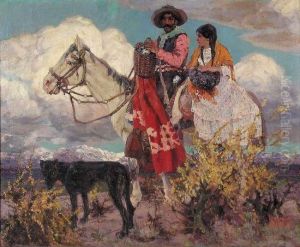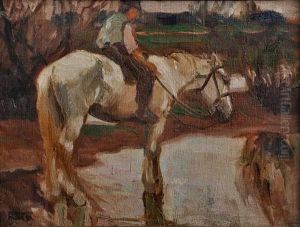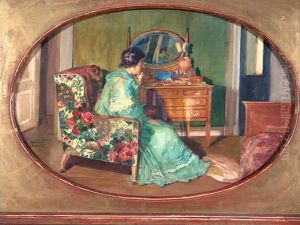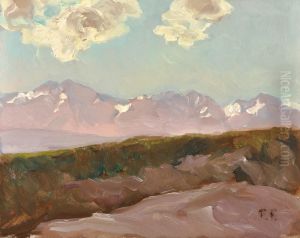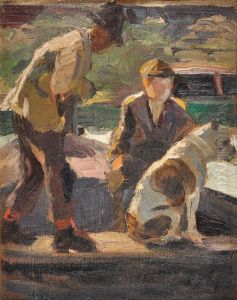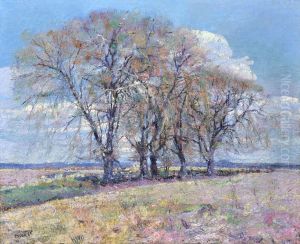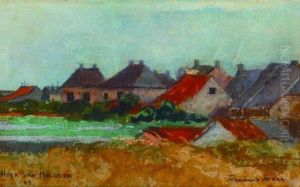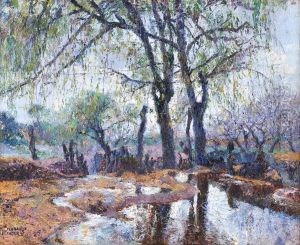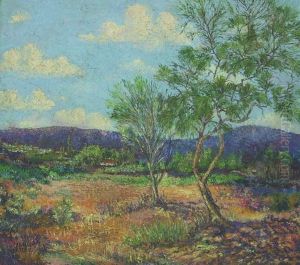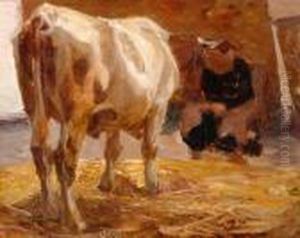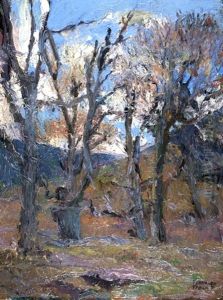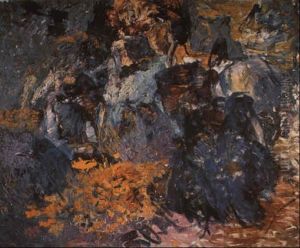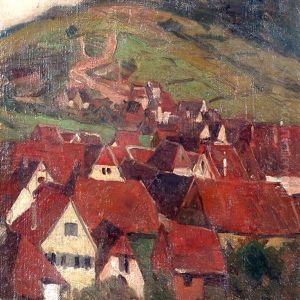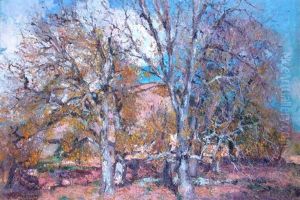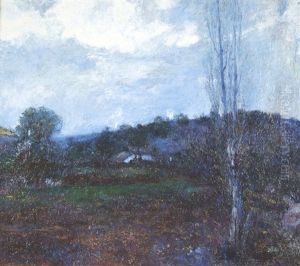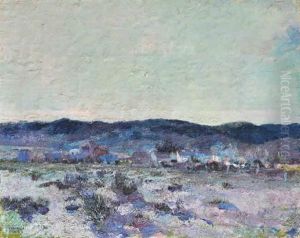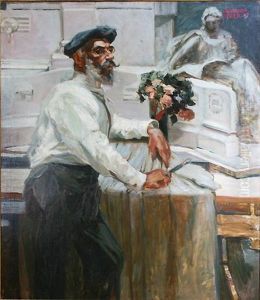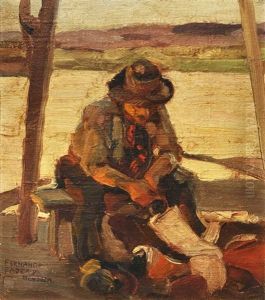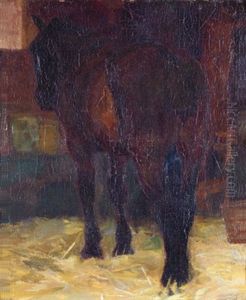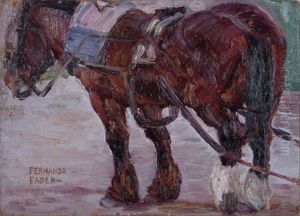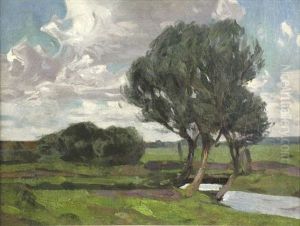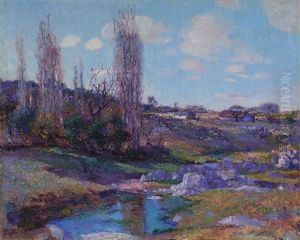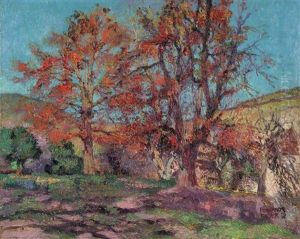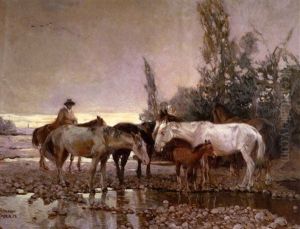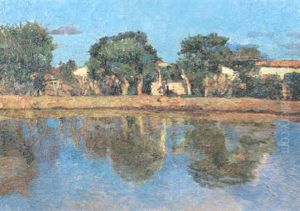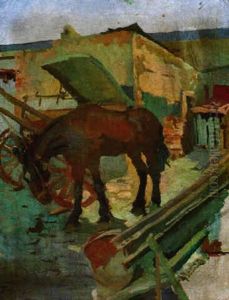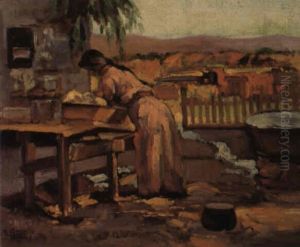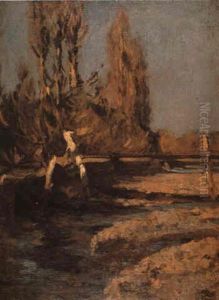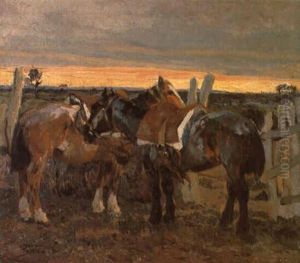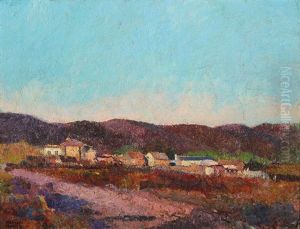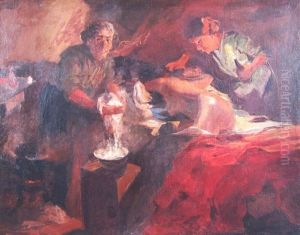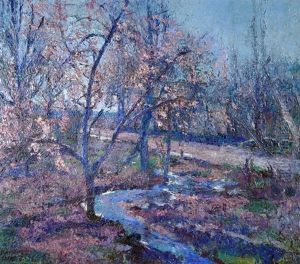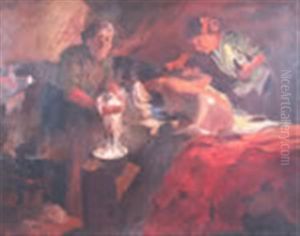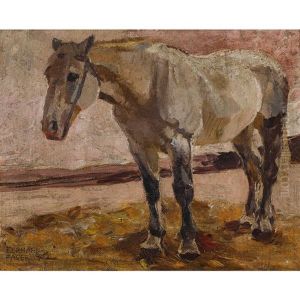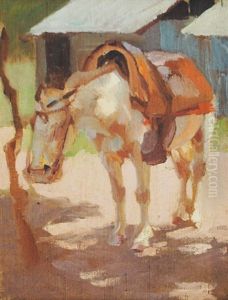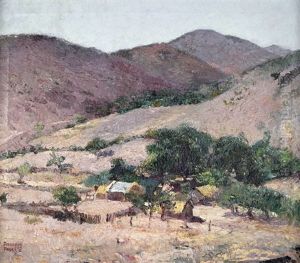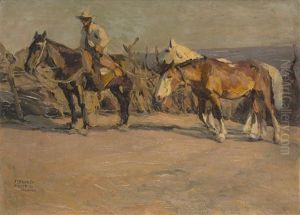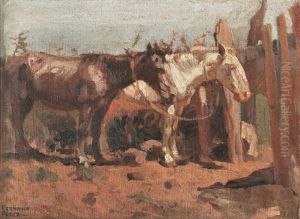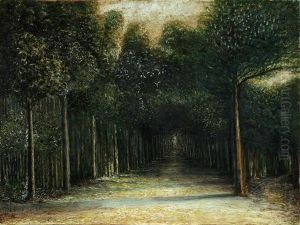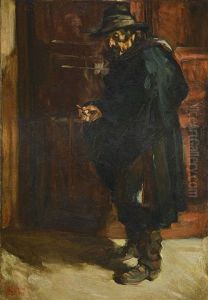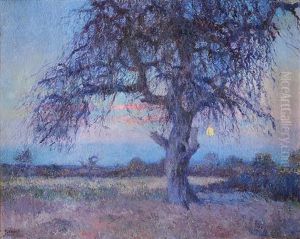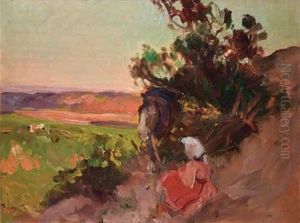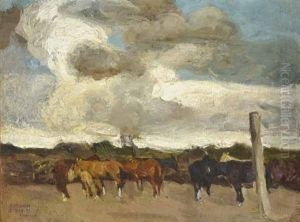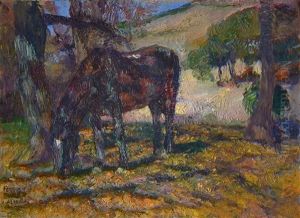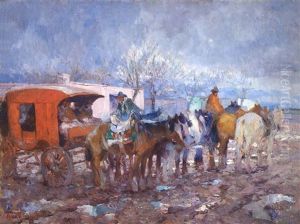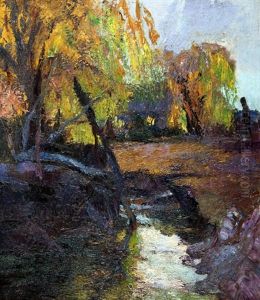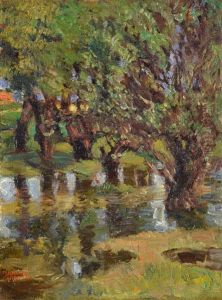Fernando Fader Paintings
Fernando Fader was an influential Argentine painter, born in Bordeaux, France, on April 11, 1882, to German parents. He moved to Argentina with his family at a young age, where he would grow to become one of the country's most prominent post-impressionist artists. Fader studied art initially in Germany at the Karlsruhe Academy, where he was influenced by German expressionism and early post-impressionism. His early work was marked by a strong European influence, but upon returning to Argentina, he began to develop a more distinctive style that incorporated the local landscape and light.
Fader's work is characterized by its vibrant use of color and dynamic compositions, often focusing on scenes of rural life, landscapes, and domestic scenes. He was particularly adept at capturing the unique quality of light in the Argentine countryside, something that became a hallmark of his work. After his return to Argentina, Fader settled in the province of Córdoba, where he was deeply inspired by the local scenery. His paintings from this period are among his most celebrated, depicting the rolling hills, farming life, and tranquil scenes of rural Argentina with a rich palette and impressionistic style.
Throughout his career, Fader faced several challenges, including health problems that affected his productivity. Despite these challenges, he continued to paint and exhibit his work, gaining considerable recognition both in Argentina and internationally. He was a key figure in bringing the post-impressionist movement to Argentina and is credited with influencing a generation of Argentine artists.
Fernando Fader's legacy is preserved in several major Argentine museums, including the Museo Nacional de Bellas Artes in Buenos Aires and the Fernando Fader Museum in Mendoza, which houses a significant collection of his work. His contributions to Argentine art were not only in his paintings but also in his role as a mentor to younger artists, helping to foster a vibrant artistic community in Argentina during the early 20th century. Fader's health continued to decline in his later years, and he passed away on February 28, 1935, in Loza Corral, Córdoba. Despite his relatively short life, his work continues to be celebrated for its impact on Argentine culture and its enduring beauty.
